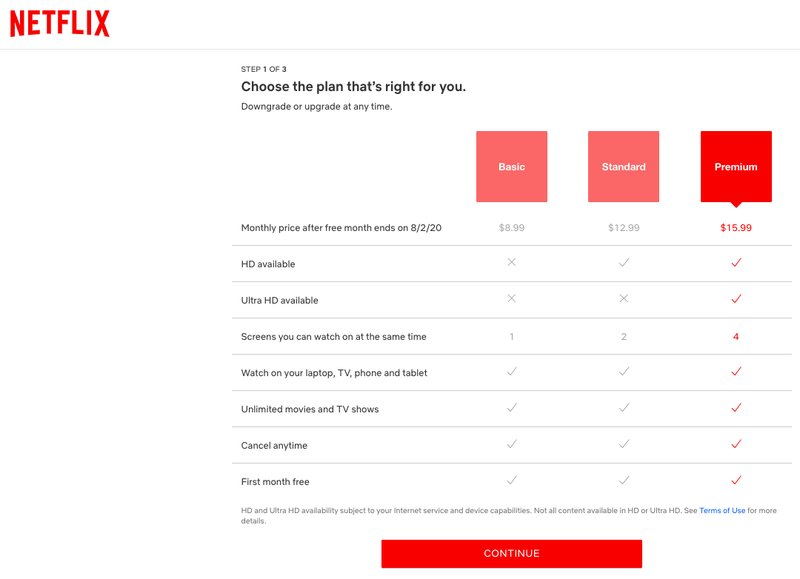You can’t open a business without answering this fundamental question: How much do I charge? Even with an answer in hand, you may find sales are slow, an indicator you may be charging more than customers will pay. Or your sales are great, but you’re charging too little for a healthy profit.
Pricing is one of the hardest business aspects to get right. I built several software products for startups and large businesses where I was responsible for pricing. I know the challenges of getting pricing right while factoring in considerations such as costs and profit margin.
Pricing is tough because it involves many variables. It affects all business areas, including sales techniques such as how to prospect for sales, sales forecasting, and the entire sales cycle. A pricing structure solves these issues and helps you achieve your pricing goals.
Overview: What is a pricing structure?
A pricing structure defines and organizes prices for your company’s products and services. The objective is to charge a rate that aligns with your pricing strategy while balancing profits with what the market will bear to avoid over- or under-charging customers.
A pricing structure prices products and services so that it makes sense to customers and gets them to buy. For instance, you might offer a discount when customers buy more than one product.
Several pricing structures exist. These are common ones:
• Flat rate: You choose one price for your offerings and you’re done. This works great when you have a single product or service, or you charge an hourly rate that doesn’t change.
• Tiered pricing: This is a popular option. You set different product prices based on value. The greater the value, the higher the price. An example is a software product. The basic version is one price, and if you want more features, you upgrade and pay a higher price.
• Pay per use: This pricing structure charges based on how much of your offering is used. A typical example is electricity. The more electricity you consume, the more you pay.
• Razor-blade pricing: This approach is called “razor-and-blade” because razor blades are an example of how the model works. You sell a core product, the razor, then make money from selling complementary products: the razorblades.
Prices are dynamic. Your competition may change prices. Your costs increase as suppliers charge more. The pricing structure keeps you organized in this dynamic environment.
A robust pricing structure is important to maximize sales and profit. If your pricing structure is too simplistic or lacks price controls, particularly in B2B sales, you end up with prices all over the map.
I’ve seen firsthand how sales reps abandon the price list to make up their own pricing. In these cases, the business loses money because of unnecessary discounting and lack of price fences.
Pricing structure vs. pricing strategy: What’s the difference?
Pricing strategy is the overarching approach used to set pricing for a company’s products and services. It doesn’t define actual price points, but the pricing structure is a consequence of the strategy, and it’s where you set the price customers see.
You must first set a pricing strategy before you can build a price structure since the former dictates the latter. Netflix is a good pricing structure example. It uses a value-based pricing strategy to lure customers from cable television subscriptions.
Netflix applies a tiered subscription pricing structure to articulate its pricing strategy. The tiered pricing enables customers to choose an option based on their needs, such as selecting a higher priced plan for high-definition picture quality. Netflix uses a free trial as a carrot to get sign-ups.

How to set up a pricing structure
Pricing structures can be simple or complex. Start with a simple approach to avoid becoming overwhelmed by the process, especially if you sell several products or services. Then evolve your pricing. These steps show you how.
Step 1: Do your homework
Before you tackle pricing, do your homework. Research and understand your target customers, the competition, and the marketplace. Depending on the industry you operate in, other factors may affect price, such as local laws and industry regulations.
Business costs are the other research area. These costs aren’t limited to the production of your goods or services. Rent, employee payroll, taxes, Sales and marketing, and other factors contribute to your costs.
This information influences your pricing strategy. Once a strategy is in place, you’re ready to build your pricing structure.
This first step is the foundation for effective pricing. These tips can help.
• Know your customers: No matter your product or service, you must identify your target audience and learn as much about them as possible. This includes their income level and why they are attracted to your offerings. Do this through customer surveys, reading research online, or simply asking your customers for feedback, not just about your business, but also what they think of competitor prices and pricing structures.
• Examine competition: Look at competitors and dissect their pricing structures. Why are they using that approach? Should you use the same? See what they typically charge for an offering similar to yours. Check their website, visit their location, or call them. This research ensures you’re not charging too much or using an overly complex pricing structure, which can drive customers to competitors. It also identifies if you’re too far below the market price, which eats into your profits.
• Understand the market: Your local market consists of several elements: your geography, industry, and addressable audience. For example, a luxury car dealership’s business is limited by the number of people with the income level to afford the cars who live nearby. You want to know your market, including how it may evolve over time and what trends can affect you later. Much of this information is available online, although some sources may require you to purchase the data.
Step 2: Define success metrics
You’ve done the research and set a pricing strategy aligned with your company’s positioning, which defines how your business is presented to customers. Now decide how to measure your sales.
Do you track the number of units sold? Is your business subscription based, so you’re looking at subscription sign-ups? Do you employ a sales team? If yes, track the number and amount of closed sales.
These success metrics help you identify your pricing structure and measure its effectiveness.
Your business flies blind without metrics. Define them with the suggestions below.
• Track what’s important to your business: The metrics should align with your company’s offerings. For example, some products may require a higher price point. In this case, use a tiered pricing structure, and track sales separately for each tier. Doing so gives you visibility into each pricing tier’s performance.
• Look at your sales process: Examine how you generate sales. Should you bundle products or services together? Do you offer greater benefits when customers pay more? Does demand fluctuate seasonally or because of other factors? A bed-and-breakfast owner may have a room with a view that generates a higher price point. Tracking bookings by room type becomes a necessity to capture this factor.
Step 3: Find a base price
Establish a base price to build your pricing structure. The base price is the foundation for pricing decisions, even if the amount isn’t applied to all offerings.
The base price gives you a starting point from which to assess higher price points, how much to discount when you want to generate demand, and other pricing decisions.
Setting your base price can prove tricky. These recommendations can help.
• Factor your costs: Your base price should cover your costs, and include some markup. This gives you flexibility to discount when you employ pricing strategies such as bundling.
• Evaluate value: Your offerings hold higher value to some customers than others. That’s why it’s important to define your target audience. If you sell organic groceries, a customer who cares about eating healthy food will happily pay more for organic food. Your research helps to evaluate your offering’s value to arrive at a base price.
Step 4: Develop pricing models
This is the culmination of the other steps. Using your success metrics and base price, model how you see your business growing.
This pricing model helps you assess which pricing structure makes the most sense. For instance, with vacation rentals, if your business is seasonal, your model should account for more units rented during your high season.
You can modify your base price up or down to evaluate the impact on revenue. From there, try different pricing structures to determine how you want to price your offerings.
This is where the rubber meets the road. Here are suggestions to help.
• Establish fences: Set appropriate buyer and price fences in your model. These are criteria for certain price points to take effect. This approach is critical if you rely on others to generate sales, such as sales reps, because the fences act as guardrails to prevent a price that’s too low while they’re prospecting or performing lead management during the sales process. When you run a New Year’s sale that ends on New Year’s Day, you’re setting a time-based fence. If you provide a discount based on the volume of units bought, you’re setting a purchase quantity fence.
• Keep it simple: The first time you model pricing, keep it simple and don’t get lost in the details. If you use tiered pricing, limit the tiers to no more than three. Keep discounts and special offers to a minimum, or consider excluding them until you’ve collected real world pricing data by seeing how customers respond to your pricing structure before adding complexity into the mix.
Step 5: Experiment to grow market share and profit
Despite your best efforts, you won’t know how customers will respond to your pricing until you try them. Some business owners are hesitant to test, thinking once a price is in front of customers, it’s difficult to change without alienating them.
That’s not the case. Today’s customers are used to dynamic pricing. Think of airlines that change prices daily, or companies such as Amazon, where the price for goods can suddenly plummet through their lightning deals before rising back to full price.
Introduce your pricing structure, collect real world data, and see how your success metrics are trending. Customer engagement software, such as CRM software, collects customer data you can use for this exercise.
Get a baseline, such as a month’s worth of sales. Then experiment. See what kinds of pricing approaches drive sales or help you grow market share, then double down on those to grow your business.
If you don’t test and experiment, it’s an uphill battle to grow.
• Choose low-risk tests: Start tests in a low-risk environment. Choose customers you, or if you have a sales team, your sales management have a strong relationship with. Select a small sample size or a specific segment of your customer base. Adjust based on your findings, and continue testing until you see your success metrics moving in the right direction. That’s when you can roll out the pricing structure to all customers.
• Look at non-sales outcomes: Analyze if certain pricing structures incur higher costs in time, money, or effort. Even if sales increase, a labor-intensive pricing program could eat up profits due to increased employee hours. Also consider how your pricing approach affects customer perception relative to competitors.
Final advice on pricing structures
Pricing is a lever to grow your business, and its impact on your customers is the most important factor in choosing the right pricing structure for your business. Prices that draw customers in but aren’t profitable are as bad as prices that drive customers away.
Apply a pricing structure that strikes the right balance and makes the most sense for your business model and customers. Experiment to find that balance, and watch your profits grow.
The post How to Create a Pricing Structure appeared first on the blueprint and is written by Robert Izquierdo
Original source: the blueprint





